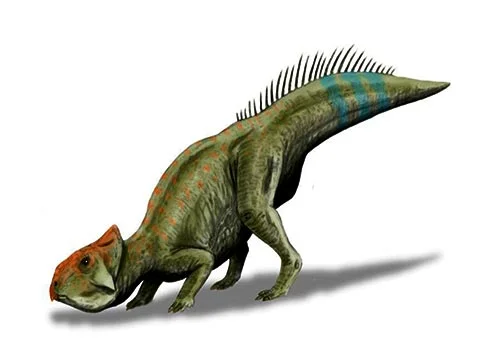Leptoceratops (Small horned face)

Lep-toe-ser-ah-tops
Barnum Brown – 1914
Herbivore
Estimated 2 meters long
Ceratopsian
L. gracilis (type)
Canada, Alberta. USA, Wyoming
Late Cretaceous, 75 million years ago
Leptoceratops Facts
Leptoceratops is a genus of small ceratopsian dinosaurs that lived during the Late Cretaceous period, about 75 million years ago. Its name means “slender horned face,” and it is named after its relatively small size compared to other members of the ceratopsian family.
Leptoceratops was also discovered in 1947 by a team of Canadian geologists, and its fossils have been found in the Alberta and Saskatchewan provinces of Canada. The known specimens of Leptoceratops consist mainly of skulls and partial skeletons, indicating that it was a relatively small dinosaur, growing to only about 2 meters (6.6 feet) in length and weighing around 90 kilograms (200 pounds).
One of the most notable features of Leptoceratops is its frill, which is relatively short and rectangular compared to the more elaborate frills of other ceratopsians like Triceratops. The frill of Leptoceratops had a large hole in the center, and it is thought that this hole may have been used to help reduce the weight of the skull, making it easier for the dinosaur to move its head.
Leptoceratops likely lived in herds and fed on low-growing vegetation. It may have used its sharp beak to crop plants close to the ground, and its cheek teeth would have been used to grind up tougher plant material.
Despite its small size and relatively simple frill, Leptoceratops is an important part of the dinosaur family tree. It is one of the earliest ceratopsians to have evolved, and it provides important clues about the evolution of the larger and more elaborate ceratopsians that would come later in the Late Cretaceous period.



